Suraj Kumar
An Adaptive Data-Resilient Multi-Modal Framework for Hierarchical Multi-Label Book Genre Identification
May 05, 2025
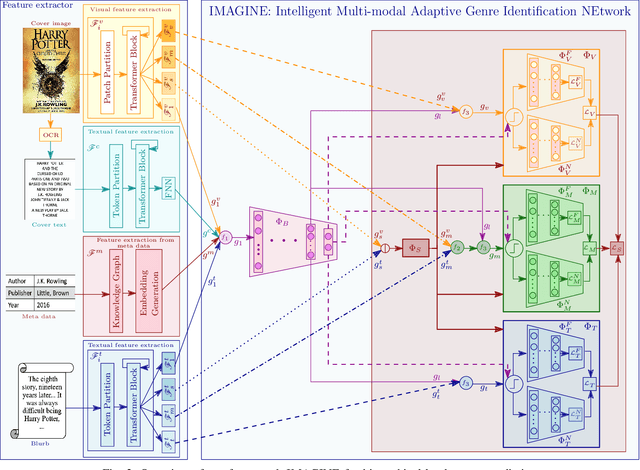
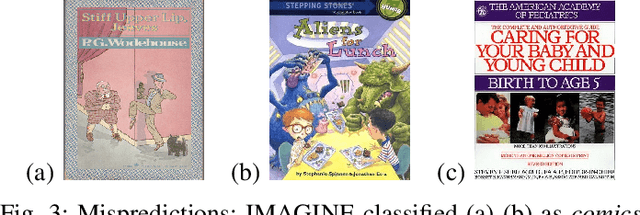
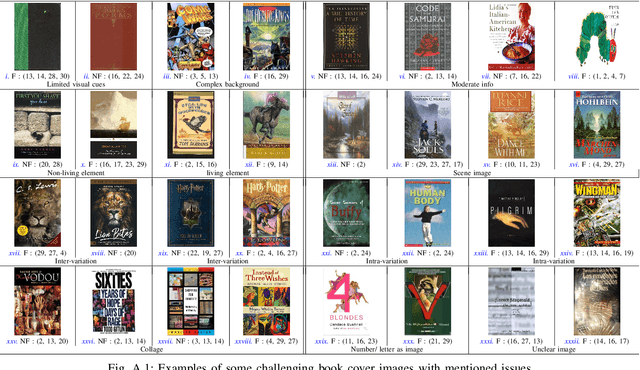
Abstract:Identifying the finer details of a book's genres enhances user experience by enabling efficient book discovery and personalized recommendations, ultimately improving reader engagement and satisfaction. It also provides valuable insights into market trends and consumer preferences, allowing publishers and marketers to make data-driven decisions regarding book production and marketing strategies. While traditional book genre classification methods primarily rely on review data or textual analysis, incorporating additional modalities, such as book covers, blurbs, and metadata, can offer richer context and improve prediction accuracy. However, the presence of incomplete or noisy information across these modalities presents a significant challenge. This paper introduces IMAGINE (Intelligent Multi-modal Adaptive Genre Identification NEtwork), a framework designed to address these complexities. IMAGINE extracts robust feature representations from multiple modalities and dynamically selects the most informative sources based on data availability. It employs a hierarchical classification strategy to capture genre relationships and remains adaptable to varying input conditions. Additionally, we curate a hierarchical genre classification dataset that structures genres into a well-defined taxonomy, accommodating the diverse nature of literary works. IMAGINE integrates information from multiple sources and assigns multiple genre labels to each book, ensuring a more comprehensive classification. A key feature of our framework is its resilience to incomplete data, enabling accurate predictions even when certain modalities, such as text, images, or metadata, are missing or incomplete. Experimental results show that IMAGINE outperformed existing baselines in genre classification accuracy, particularly in scenarios with insufficient modality-specific data.
Anomaly Resilient Temporal QoS Prediction using Hypergraph Convoluted Transformer Network
Oct 23, 2024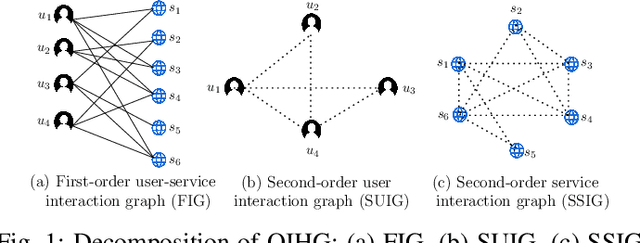
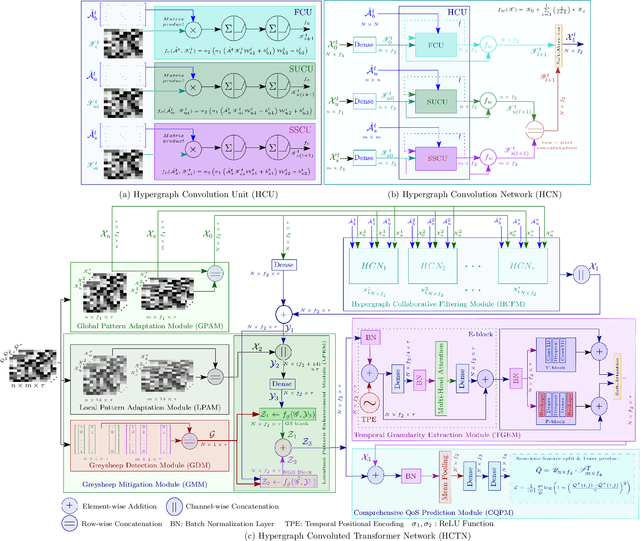

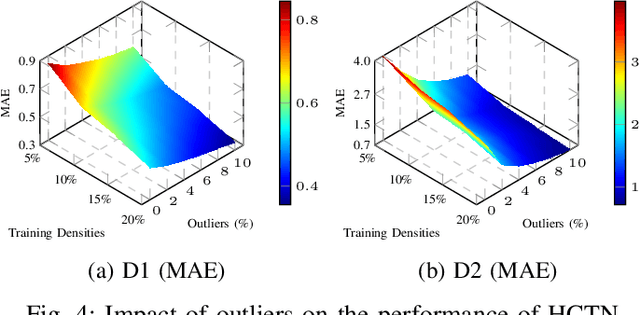
Abstract:Quality-of-Service (QoS) prediction is a critical task in the service lifecycle, enabling precise and adaptive service recommendations by anticipating performance variations over time in response to evolving network uncertainties and user preferences. However, contemporary QoS prediction methods frequently encounter data sparsity and cold-start issues, which hinder accurate QoS predictions and limit the ability to capture diverse user preferences. Additionally, these methods often assume QoS data reliability, neglecting potential credibility issues such as outliers and the presence of greysheep users and services with atypical invocation patterns. Furthermore, traditional approaches fail to leverage diverse features, including domain-specific knowledge and complex higher-order patterns, essential for accurate QoS predictions. In this paper, we introduce a real-time, trust-aware framework for temporal QoS prediction to address the aforementioned challenges, featuring an end-to-end deep architecture called the Hypergraph Convoluted Transformer Network (HCTN). HCTN combines a hypergraph structure with graph convolution over hyper-edges to effectively address high-sparsity issues by capturing complex, high-order correlations. Complementing this, the transformer network utilizes multi-head attention along with parallel 1D convolutional layers and fully connected dense blocks to capture both fine-grained and coarse-grained dynamic patterns. Additionally, our approach includes a sparsity-resilient solution for detecting greysheep users and services, incorporating their unique characteristics to improve prediction accuracy. Trained with a robust loss function resistant to outliers, HCTN demonstrated state-of-the-art performance on the large-scale WSDREAM-2 datasets for response time and throughput.
Discrete time model predictive control for humanoid walking with step adjustment
Oct 09, 2024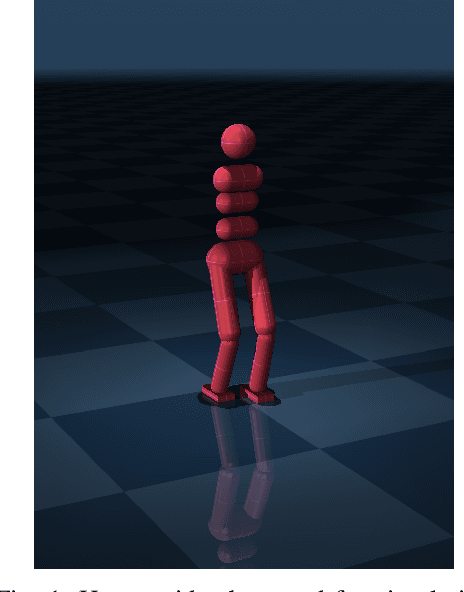
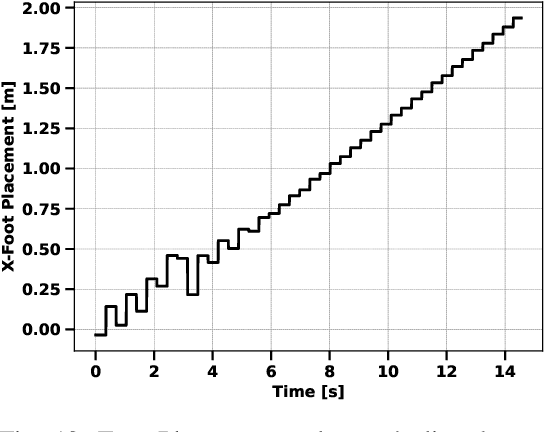
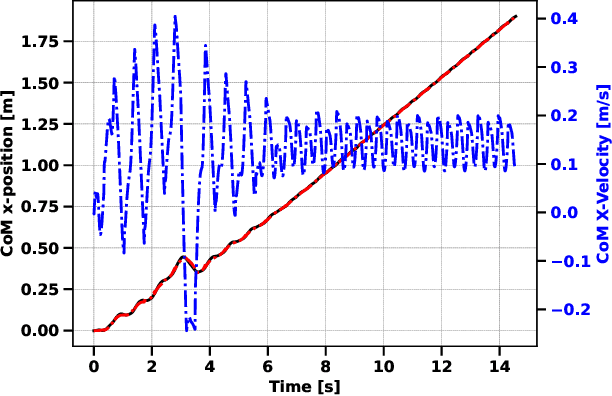
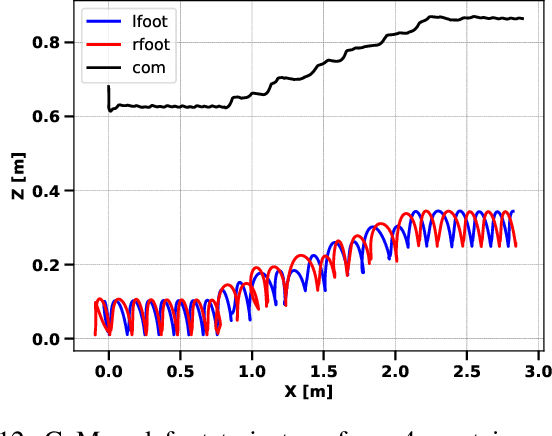
Abstract:This paper presents a Discrete-Time Model Predictive Controller (MPC) for humanoid walking with online footstep adjustment. The proposed controller utilizes a hierarchical control approach. The high-level controller uses a low-dimensional Linear Inverted Pendulum Model (LIPM) to determine desired foot placement and Center of Mass (CoM) motion, to prevent falls while maintaining the desired velocity. A Task Space Controller (TSC) then tracks the desired motion obtained from the high-level controller, exploiting the whole-body dynamics of the humanoid. Our approach differs from existing MPC methods for walking pattern generation by not relying on a predefined foot-plan or a reference center of pressure (CoP) trajectory. The overall approach is tested in simulation on a torque-controlled Humanoid Robot. Results show that proposed control approach generates stable walking and prevents fall against push disturbances.
TPMCF: Temporal QoS Prediction using Multi-Source Collaborative Features
Mar 30, 2023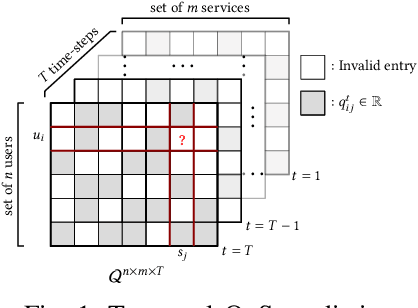
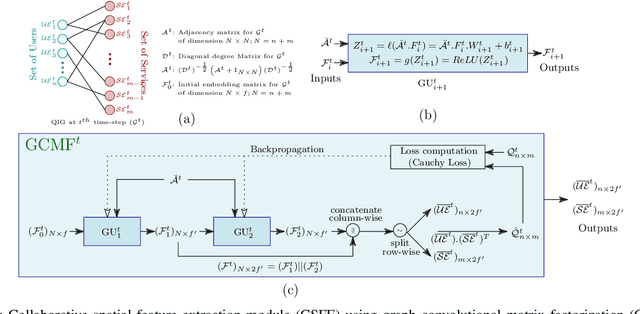
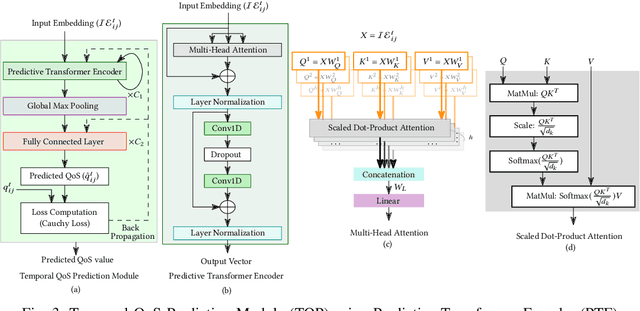
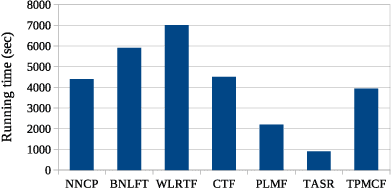
Abstract:Recently, with the rapid deployment of service APIs, personalized service recommendations have played a paramount role in the growth of the e-commerce industry. Quality-of-Service (QoS) parameters determining the service performance, often used for recommendation, fluctuate over time. Thus, the QoS prediction is essential to identify a suitable service among functionally equivalent services over time. The contemporary temporal QoS prediction methods hardly achieved the desired accuracy due to various limitations, such as the inability to handle data sparsity and outliers and capture higher-order temporal relationships among user-service interactions. Even though some recent recurrent neural-network-based architectures can model temporal relationships among QoS data, prediction accuracy degrades due to the absence of other features (e.g., collaborative features) to comprehend the relationship among the user-service interactions. This paper addresses the above challenges and proposes a scalable strategy for Temporal QoS Prediction using Multi-source Collaborative-Features (TPMCF), achieving high prediction accuracy and faster responsiveness. TPMCF combines the collaborative-features of users/services by exploiting user-service relationship with the spatio-temporal auto-extracted features by employing graph convolution and transformer encoder with multi-head self-attention. We validated our proposed method on WS-DREAM-2 datasets. Extensive experiments showed TPMCF outperformed major state-of-the-art approaches regarding prediction accuracy while ensuring high scalability and reasonably faster responsiveness.
 Add to Chrome
Add to Chrome Add to Firefox
Add to Firefox Add to Edge
Add to Edge